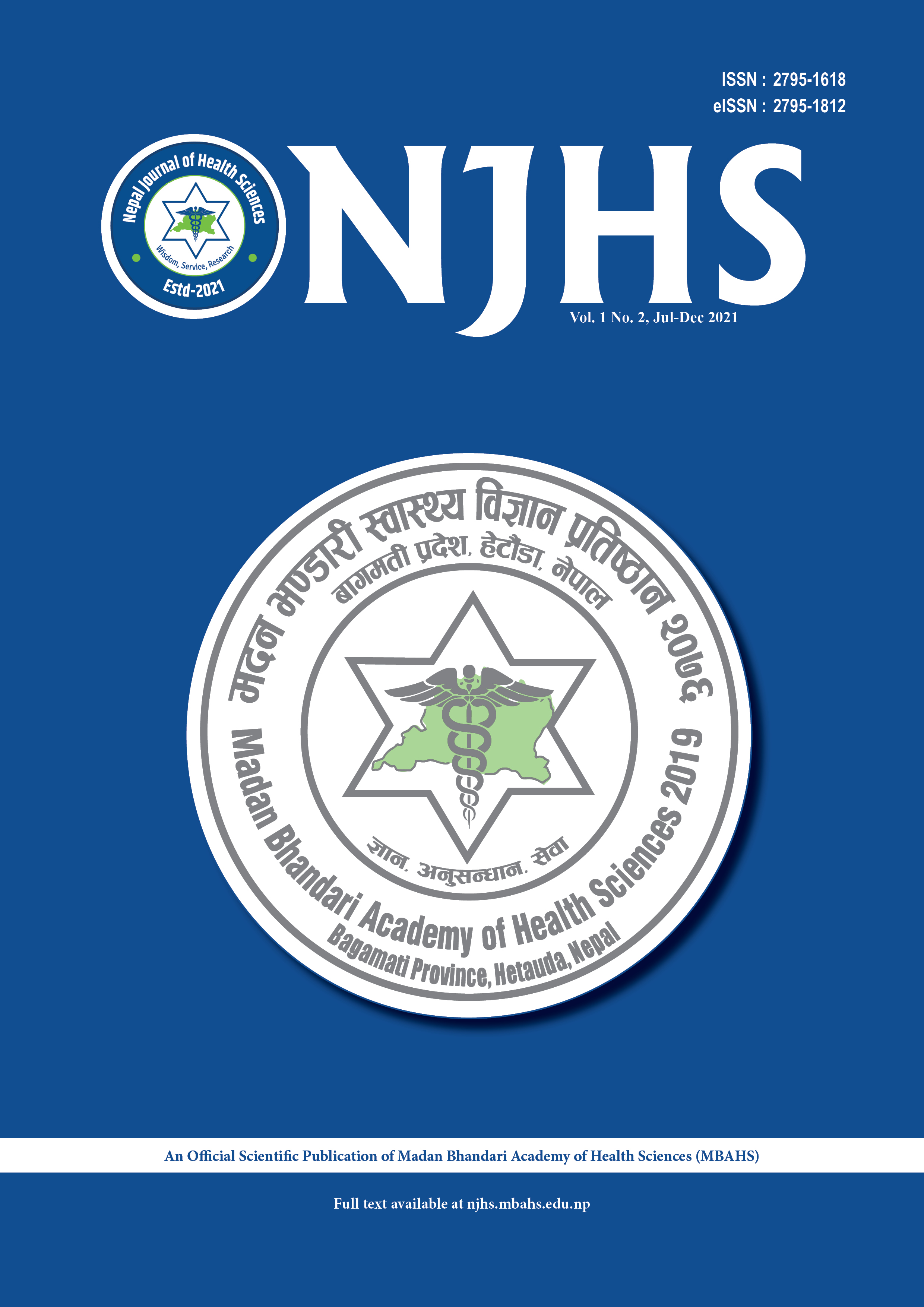Outcome of Extracorporeal Shockwave Lithotripsy as Monotherapy in Upper Urinary Tract Lithiasis
DOI:
https://doi.org/10.3126/njhs.v1i2.42377Keywords:
Extracorporeal shockwave lithotripsy; outcome; upper urinary tract calculiAbstract
Introduction: Due to its non-invasive nature, extracorporeal shockwave lithotripsy (ESWL) is the preferred treatment modality for uncomplicated renal and ureteral stone < 20 mm in diameter. The success rate of it ranges from 46% to 91% depending on various factors.
Objective: To assess the outcome of ESWL as monotherapy in uncomplicated solitary renal and upper ureteric calculus ranging from 10mm to 20mm.
Methods: In this retrospective study, the records of 34 patients who underwent Extracorporeal shockwave lithotripsy ESWL inBirat Medical College – Teaching Hospital over a period of one and a half years were reviewed to assess the outcome in terms of stone free rate and complication rate.
Results: Mean age of the patients was 30.57±8.44 years and mean calculus size was 14.47±2.68 mm (range 10-20mm). The male and female ratio was 2:1. The success rate was higher for pelvic (83.33%) and upper calyceal (75%) and upper ureteric calculi (75%) compared to other calyces. Clinically significant residual fragment (CSRF) was the most common problem after ESWL (23.33%) at three months after the procedure.
Conclusions: The outcome of ESWL as monotherapy for upper urinary tract calculi is acceptable in selected cases three months after the procedure.
Keywords: Extracorporeal shockwave lithotripsy; outcome; upper urinary tract calculi.
Downloads

Downloads
Published
How to Cite
Issue
Section
License
Copyright (c) 2022 Dipak Kumar Thakur

This work is licensed under a Creative Commons Attribution 4.0 International License.



